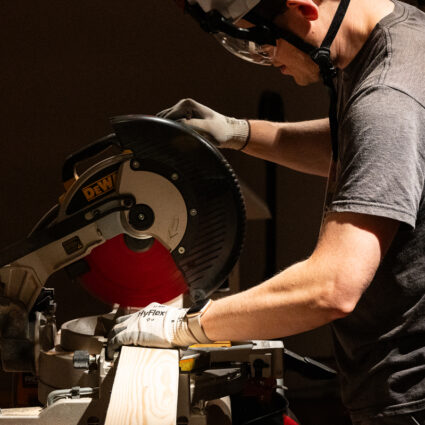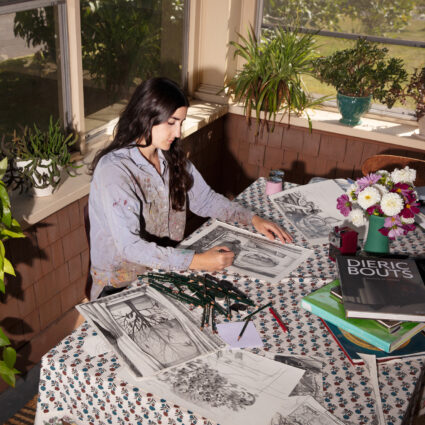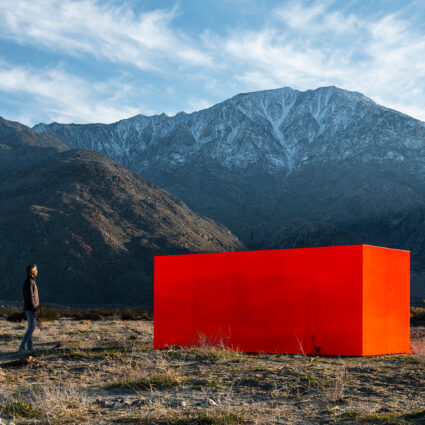Dancing Earth’s BTW US Cyberspace imagines digital space as a realm of creative gathering and regeneration.
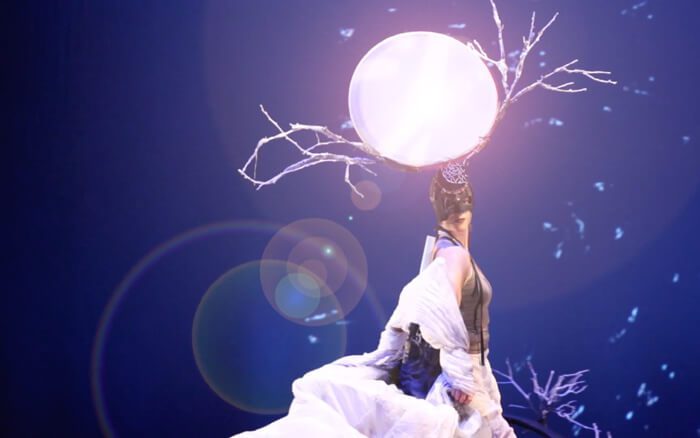
In a year of social distancing and division, global Indigenous dance company Dancing Earth uses digital space for creative gathering and (re)generation. The art they make convening “here” feels like contemporary ritual. Dancing Earth’s current work, BTW US Cyberspace, constructs and inhabits a liminal realm between tradition and technology. The dancers forge a Mobius pathway through personal, political, ecological, and cosmological histories toward a vision of renewal.
All of Dancing Earth’s work is rooted deeply in community. In previous years, the company has worked closely with seed savers and food and water justice groups. This year, Indigenous communities have been especially hard hit by COVID-19. “We are dancing for our lives and collectively for balance of life on the planet,” says Rulan Tangen, the company’s founder and artistic director. The company has been extraordinarily active and adaptive during the pandemic, creating and sharing innovative and healing performance art and workshops online.

Diversity is at the heart of the resilience that Dancing Earth cultivates. “Different walks of life help you interact with a lot of different goals.” says dancer Raven Bright, who comes from Diné and European ancestry. “I learned a lot about my own culture through hip hop,” he illustrates. “In a powwow and in break dancing, there is a sacred circle. Inside the circle, energy can be anything. You become that energy and move from inside yourself to reach outward.”
BTW US Cyberspace is itself transforming. Between Underground and Skyworld, the piece’s first incarnation, premiered last year on stage and in person. The company’s methodology involves constant input from artists and community members. “We are always reworking and rethinking,” says costume designer Connie Wind Walker. “Such a dynamic process has made me more flexible and open to the possibilities of change. Collaborating online has actually made me feel more involved.”
‘How could my body not influence the things that I create digitally? We are present in both ways.”
The piece synthesizes experiences and knowledge into a narrative greater than the sum of its parts. The artists rehearsed via Zoom, delving into concepts and learning to capture the force of their performances on screen. The dancers recorded themselves in various locations. Futurity Design Developer Carolina Azteca Sirias edited the video and created virtual effects. Her imagination and virtual reality skills link and enhance the separate recordings in ways even the dancers didn’t imagine.
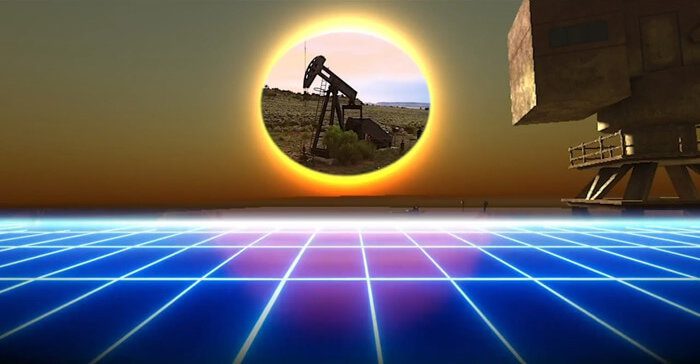
The cyberspace between them allowed the artists to more powerfully bridge perspectives than they might have been able to do in one physical place. “Two of our members were participating from California during the fires. It was so wild to see what they were in the middle of,” says Bright. “Where they were filming, it looked like the sky was painted. I was in Albuquerque, where things were okay at the time. They’d come to rehearsals out of breath because their lungs were burning. The sense of what they were going through was immediate.”
“It’s a good year to think about the apocalypse,” says Sirias, wryly. “Are we running into it or through it to something else?” A dancer as well as a software developer, Sirias has a fascinating take on virtual performance. “Movement is information,” she says, “How could my body not influence the things that I create digitally? We are present in both ways.”
Creating in virtual space is also a political act. “This process reclaims our place in the future,” says Sirias. “Digital space currently has a predominantly white paradigm—kind of ‘Jeff Bezos gets on a spaceship.’ Indigeneity is a different lens. Why upload Indigenous experience? We understand our role in our ecosystem, now and also in the past and future. We’re allowing you to be immersed in it and we’re allowing ourselves to explore it. We all have these dissociative questions and self-doubt. There is a lot of power in believing and accepting the parts that you are to play. It can feel crippling, but it is a blessing.”
BTW US Cyberspace challenges everyone to consider who we are and what we want our impact on the world and on the future to be. Bright hopes the questions inspire and activate. “It’s a ceremony. We’re sharing knowledge and sacred stories that have been passed down to us,” he says. “We want to ignite a spark. We want you to keep that spark going. When you light one match and put it next to others, they all started lighting up.”
BTW US Cyberspace is presented as a series of online episodes November 5-20, 2020, culminating in a live virtual performance. Tickets are available here.
